
Ari’s great-great grandfather Louis (pronounced in the French way rather than the English) was born Ludwig Feinshtein on 28 Oct 1900 in Libau (Liepaja) in Latvia, and died on 15 Sep 1972 in Johannesburg, South Africa. His birth is recorded in the Latvia Births Database on JewishGen:

The story told by his wife Rose was that Louis’ mother Hinda died in 1901 and the children (Louis and three older sisters – Bessie, Mary and Sara) were sent to stay with relatives (I don’t know who these relatives would have been). His father Charles (see Family stories: murdered for a wedding suit) and older brother Sam went to South Africa to join his brother (probably this was Charles’s brother Aron who had emigrated in 1889). In 1907 the uncle sent money for the children to come to South Africa.
So in 1908 Bessie, who was twelve, boarded a ship to London with Sarah, Mary and Louis. The journey took several days, and the passengers were told that the ship might capsize or take extra days to reach London. Bessie panicked and hid a couple of loaves of bread. She was caught and reprimanded, and asked where her parents were. She told them that she was in charge of the children and was forgiven. They then went by another ship from London to Cape Town (looking at a map, it is possible that they went by sea from Libau to Hamburg rather than overland, and then from Hamburg to Hull). It is very hard to imagine how they managed this journey on their own but presumably people helped them. The Jewish Heritage Trail in Hull includes this stop:
13. Anlaby Road – Emigrants’ Waiting Room
In 1871 the North Eastern Railway Company built a waiting room for transmigrants on Anlaby Road, close to Hull Paragon Station. This helped to reduce a possible threat to the health of local inhabitants and offered a shelter where passengers could make contact with reputable ticket agents. The building was enlarged in 1881 to provide separate rooms and washing facilities for men and women. Trains with as many as seventeen carriages set off from a long platform at the back of the waiting room, many of them on their way to Liverpool via Leeds. The number of migrants using the waiting room began to fall in 1907 when a dockside rail terminus was built, and the decline continued after the First World War as immigration quotas were imposed by the United States. It closed in 1999 but was reopened in 2003 as a club for Hull City supporters.
A plaque in Paragon Station commemorates the 2.2 million people who passed through the Emigration Platform, Hull on their way to America, Canada or South Africa. Among them were about half a million European Jews, hoping to find a better life elsewhere.
We went to look at it a couple of years ago but it was full of football supporters and I was too scared to go in 😦
The children stayed for a week at the Poor Jews’ Temporary Shelter in London, which records that they had come to Hull on the ship Omsk. I haven’t found these passenger lists.
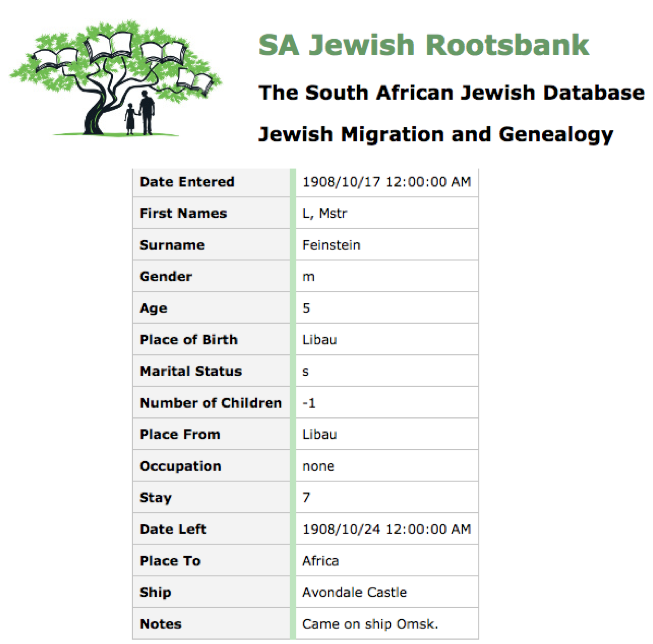
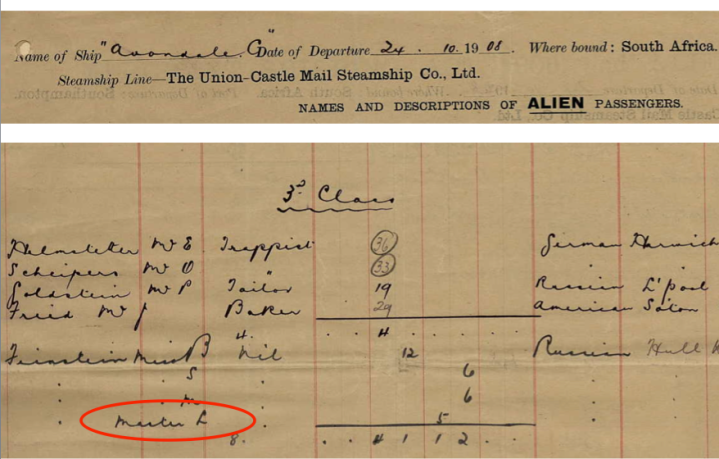
I think that Louis attended the Jewish Government School in Doornfontein (see some lovely photos here) and then Jeppe High School. I have emailed them to ask if they have any records. (Update 16 Aug: A very prompt reply: “I have checked the admission registers and the school magazines which list the new pupils every year but could not find your grandfather, Louis Feinstein. I even checked the Jeppe Prep admission register to see if I could find him but no luck.”)
The next family story about Louis was that in 1917, at the age of 17, he tried to join the army. His father had him recalled and brought home. In 1918 he again joined up, hiding in a compartment on a train for Potchefstroom. There he had his military training and left by boat for Salisbury, England, with the South African Jewish forces. Armistice was declared in November of that year and Louis volunteered for service in Vladivostock, Russia. He fought for the British against White Russia. Eventually he was repatriated and returned to South Africa.
He looks so young in the photo above. Here are the military records I have for Louis.


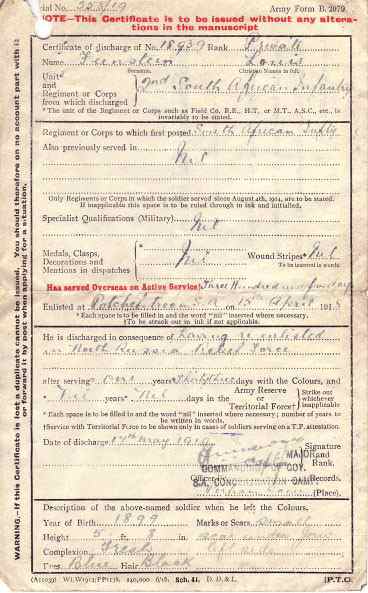

These are quite hard to read, but they do show that he lied about his age! One gives his year of birth as 1899 and the other as 1897. They show that he served in the 2nd South African Infantry for 305 days, enlisting at Potchefstroom on 15 April 1918, then being discharged on 17 May 1919 after re-enlisting in the Machine Gun Corps, North Russian Relief Force at Whitehall on 19 May 1919.

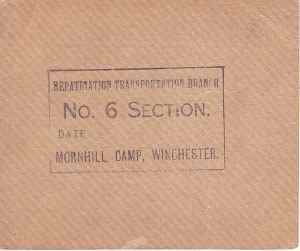
To be continued …
Ari, this shows how you are related to Louis:
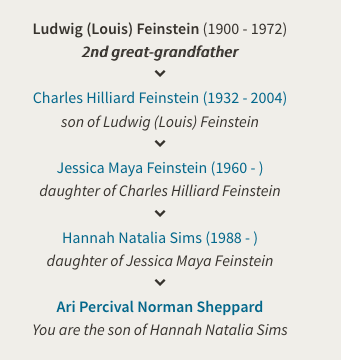
You must be logged in to post a comment.